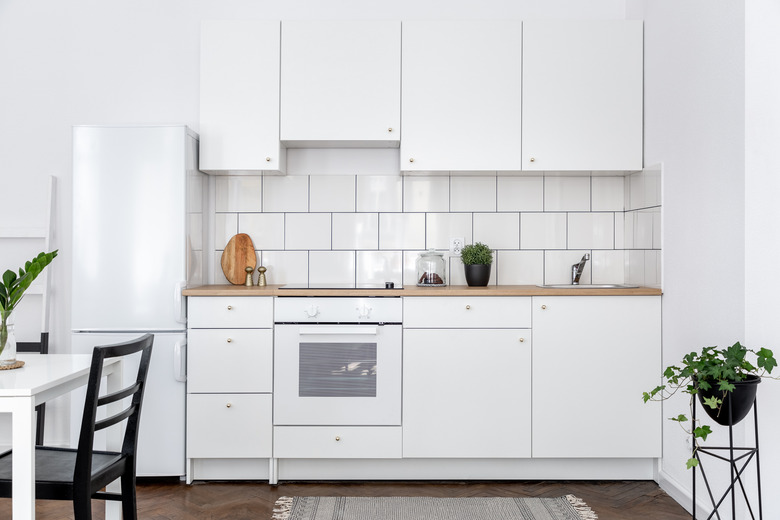How To Restore Cabinets That Have Been Chipped
When you have a bank of classic white kitchen cabinets chipping, the wear-and-tear can bring down the beauty of the entire space. A veneer that has been chipped, scratched or otherwise damaged can be brought back to new with a few simple fixes.
No matter the color, depth of scratches or peeling veneer, catching chips in kitchen cabinets early can save time, money and labor in the long run.
Tip
A paper clip inserted into peeling veneer works well to scrape away foreign objects and create a clean space.
Layer of Veneer Peeling
Layer of Veneer Peeling
Veneer that has peeled away slightly from the edge of a counter or door needs to be cleaned before it is repaired. Old House Journal recommends a quick fix that uses a plastic straw, a nail file or paper clip, a clamp and a syringe filled with glue. Use a small piece of sand paper, nail file or unbent paper clip between the peeled away veneer to clean out the space and scrape away any glue residue or dirt that has found its way into the crack.
After cleaning as well as you can, use a plastic straw to blow out any remaining dust left behind from your efforts. Use a syringe to suck up wood glue, or buy a pre-filled glue syringe at a hardware store, and squirt it into the crack. Clamp the veneer to the cabinet or frame and clean off any glue that has seeped from the crack with a damp cloth.
To protect the surface of the veneer, place a small, thin scrap of wood or layer of plastic wrap beneath the clamp. Allow the glue to dry thoroughly, according to the manufacturer's instructions, before removing.
Cabinet Touch Up Paint
Cabinet Touch Up Paint
If the bank of kitchen cabinets is riddled with chips and scratches, then it is best to stop the problems before the entire piece needs to be restored. This works well for white baseboards that are chipped, as well. For small scrapes and scratches, a swish of cabinet touch up paint can fill in the superficial marks and stop the chip from spreading.
The local hardware or big box chain store, such as Home Depot, will have cabinet touch up paint in common colors, including white, brown, gray and black. However, if you have a vibrant or hard-to-match color, ask the paint specialists at the hardware store to help you find a shade that will work best with your cabinets.
Dab the paint from the center of the shallow chip to the edges, then brush the edges to blend the paint into the existing surface. If too much paint has been applied, quickly remove it with a dry cloth and start fresh.
Repairing Chips in Cabinet Facades
Repairing Chips in Cabinet Facades
If the scrapes reach into the wood of the cabinet, then you may want to try a filler, followed by a matching layer of cabinet touch up paint.
Home Tips recommends a plastic wood filler as a first defense to small chips and nicks that go below the surface of the paint. Fill the divot or large chip with the glue filler and allow to dry. Sand around the edges until the area is smooth and even with the rest of the cabinet façade.
Match the cabinet touch up paint to the cabinet to cover the wood glue filler and blend the repair into the bank of cabinets.
